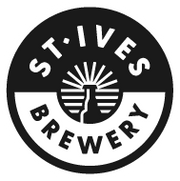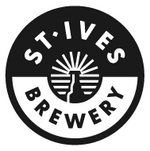Brewing Craft Beer 101: A Simple Step-by-Step Guide"
Brewing can seem pretty complicated, a tricky artform of sorts that creates stunning craft beer. We wrangled our head brewer Callum to boil down the process a little.

Get your ingredients:
Before you dive into the brewing process, make sure you have all the necessary equipment and ingredients. This includes a brew kettle, fermenter, airlock, sanitizer, malt extract, hops, yeast, and, of course, water. You’ll need a list based on the type of beer you want to brew – from more craft style beers like our blackberry infused Barnoon Belgian Dubbel to more hazy and tropical IPAs like Slipway.
Keep it clean:
Cleanliness is crucial in brewing. Thoroughly sanitise all your equipment to ensure a sterile environment for your beer to ferment. This step helps prevent unwanted bacteria from spoiling your brew, because who wants a bad beer?
Mashing:
In a large pot, mix your malt extract with water and heat it to a specific temperature range in a process called mashing. This activates enzymes that convert the grains' starches into fermentable sugars, creating the foundation of your beer. Our mashing process takes place in a 30HL Lang with a 30HL Lauter made by SSV Limited.
Boiling and Hopping:
Bring the mixture to a boil and add hops. Hops contribute bitterness, flavour, and aroma to your beer. Follow your recipe for hop additions, which can occur at various stages during the boil. This part of the process at St Ives Brewery is completed in our Ketle and Whirlpool vessels.

Cooling the Wort:
After boiling, rapidly cool the liquid (now called wort) to a temperature suitable for fermentation. A wort chiller or an ice bath can be used for this purpose, we use a wort chiller (Heat exchanger).
Fermentation:
Transfer the cooled wort to a fermenter, pitch your yeast, and seal it with an airlock. Allow the yeast to work its magic, converting sugars into alcohol and carbon dioxide. This primary fermentation phase typically lasts one to two weeks, depending on the type of beer you are brewing. Although, it’s not a case of just leaving it there alone for that time period. You’ll want to test as you go.
Racking (Optional):
Some brewers choose to transfer the beer to a secondary fermenter to clarify the brew and separate it from sediment. While not absolutely necessary, this step can enhance the beer's appearance and remove sediment and cloudy appearance – although many modern craft beers, like our Slipway IPA or Destination DIPA are really rather partial to remaining cloudy!
Bottling:
Once fermentation is complete, it's time to bottle your beer. Add a small amount of sugar to the bottling bucket before siphoning the beer into bottles. This sugar will carbonate the beer naturally during the bottling process. Our bottling line is about as good as it gets, making the process clean and efficient. We bottle our core range of Meor, Porth, Hella and Alba, but also have another line for canning our 440ml craft range like Back Road West, La Pina or our Potato and Rosemary Wheat beer. Good craft beer needs good production lines, so make sure you have this ready to go.

Conditioning:
After bottling, let your beer condition for a few weeks to allow flavours to meld and carbonation to develop. Store bottles in a cool, dark place and then get them ready to be sold!
Enjoying a beer:
You’ve done it. Sit back and sip on your Cornish craft beer.
Remember, brewing beer is both an art and a science, so don't be afraid to experiment and refine your process with each batch. Cheers to your brewing adventure – or cheers to getting your beer from us, as we have done the learning and experimenting for you to create a wide range of beer brewed in our Cornish brewery.





